In the daily life of an After Effects user, one frequently encounters the challenge of creating similar compositions with different content repeatedly. This is particularly crucial in television work, where lower thirds and openers are often needed in large quantities, making it essential to optimize the workflow. In this guide, you will learn how to significantly simplify the process of text generation in compositions using expressions. This approach allows you to work more effectively and save time.
Key Takeaways
By using expressions in After Effects, you can handle text in various compositions more effectively.
- You will learn how to integrate the name of a composition into a text layer.
- You will discover how to effectively split text based on a custom delimiter.
- You can automate repetitive tasks, significantly reducing the workload.
Step-by-Step Guide
Step 1: Preparing the Composition
Start with a composition that you want to use as a template. You may have already created simple lower thirds displaying a name and job titles.
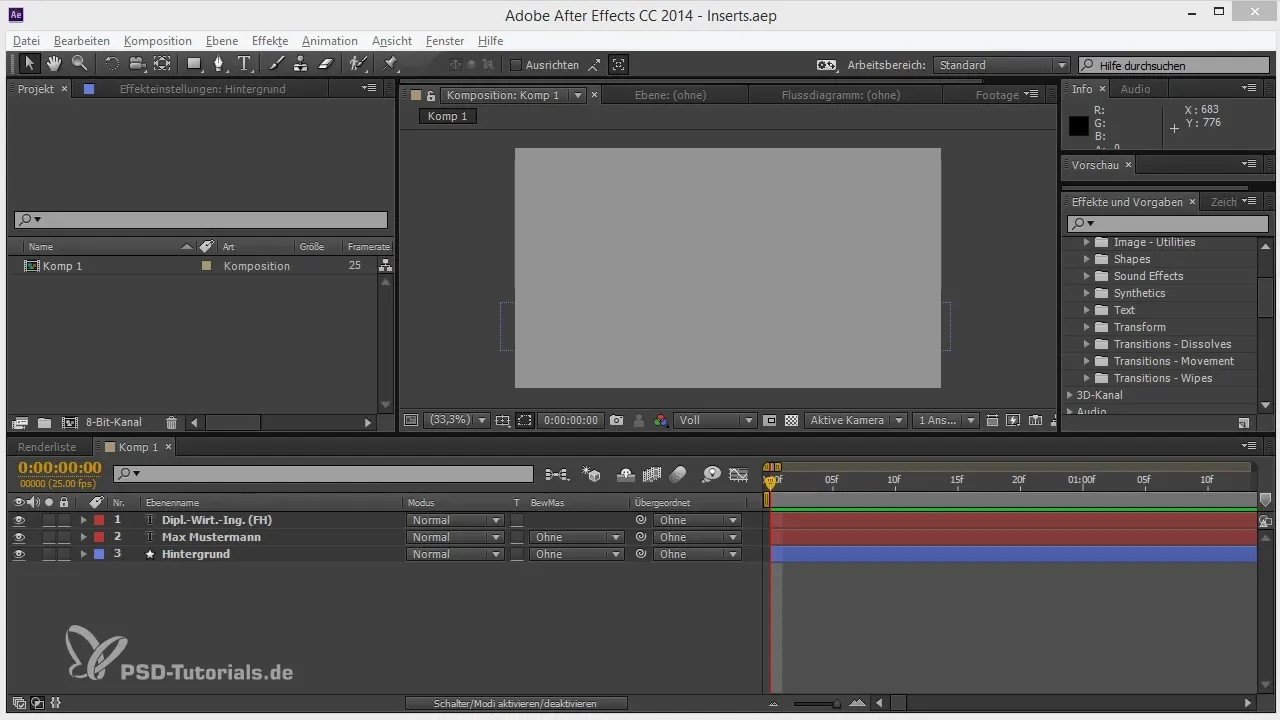
Step 2: Creating the Text Components
Add a text layer that represents the person's name. For example, you can write "Max Mustermann", followed by two hashes (##) as a delimiter, and then the profession "Diplom-Wirtschaftler".
Step 3: Adding an Expression
To make the text dynamic, select the text layer, expand the layer, and click with the Alt key (Option key on Mac) on the stopwatch next to the text layer to add an expression.
Step 4: Accessing the Composition Name
In the opened expression, add the command thisComp.name. This will get you the name of the composition in which the text layer is located.
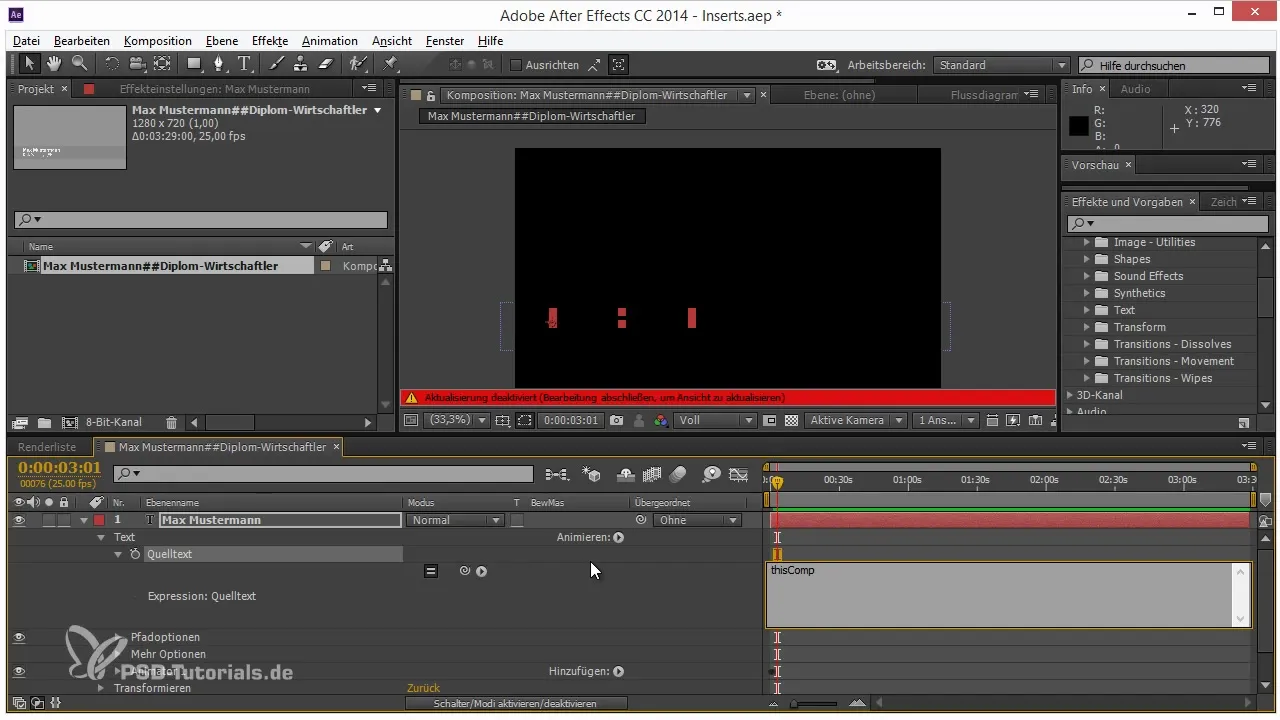
Step 5: Splitting the Composition Name
To only display a part of the name, use the function split(). Write the expression thisComp.name.split("##"). This splits the composition name at each point where the hashes appear.
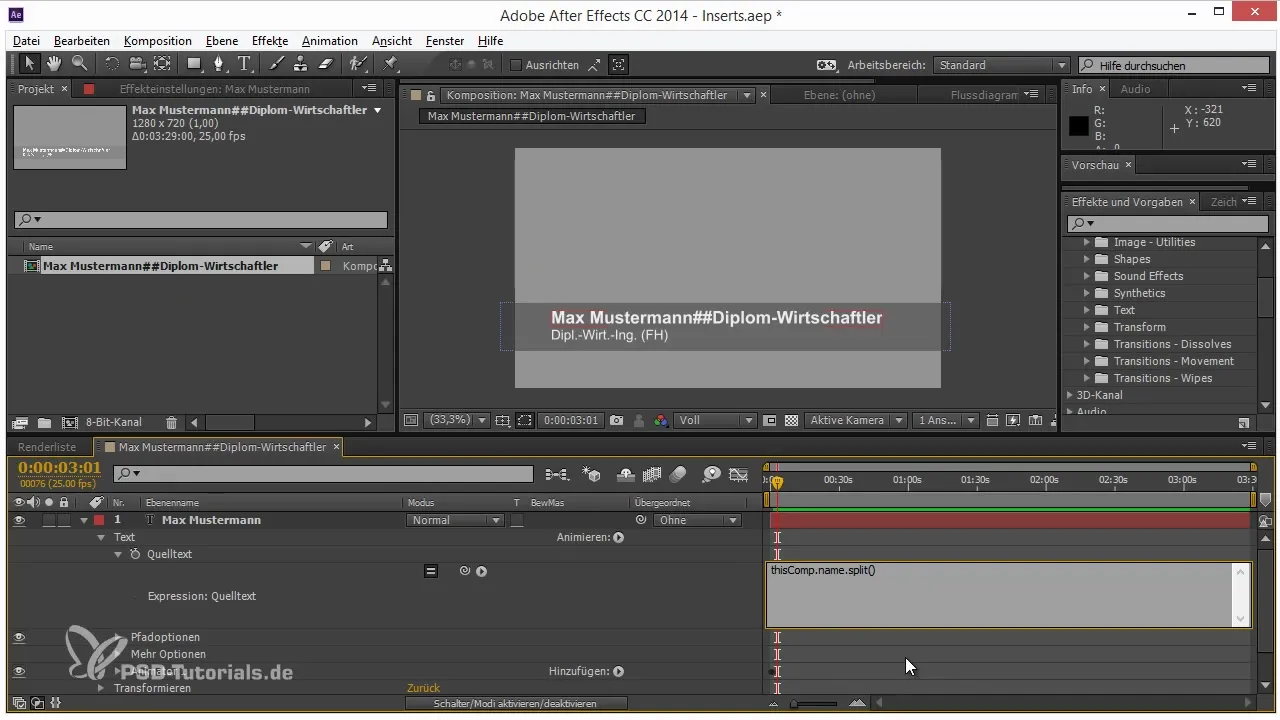
Step 6: Accessing the Individual Parts
Since split() returns an array, you can access the first part of the array with [0] and the second part with [1]. This looks like this in the expression: thisComp.name.split("##")[0] for the name and thisComp.name.split("##")[1] for the profession.
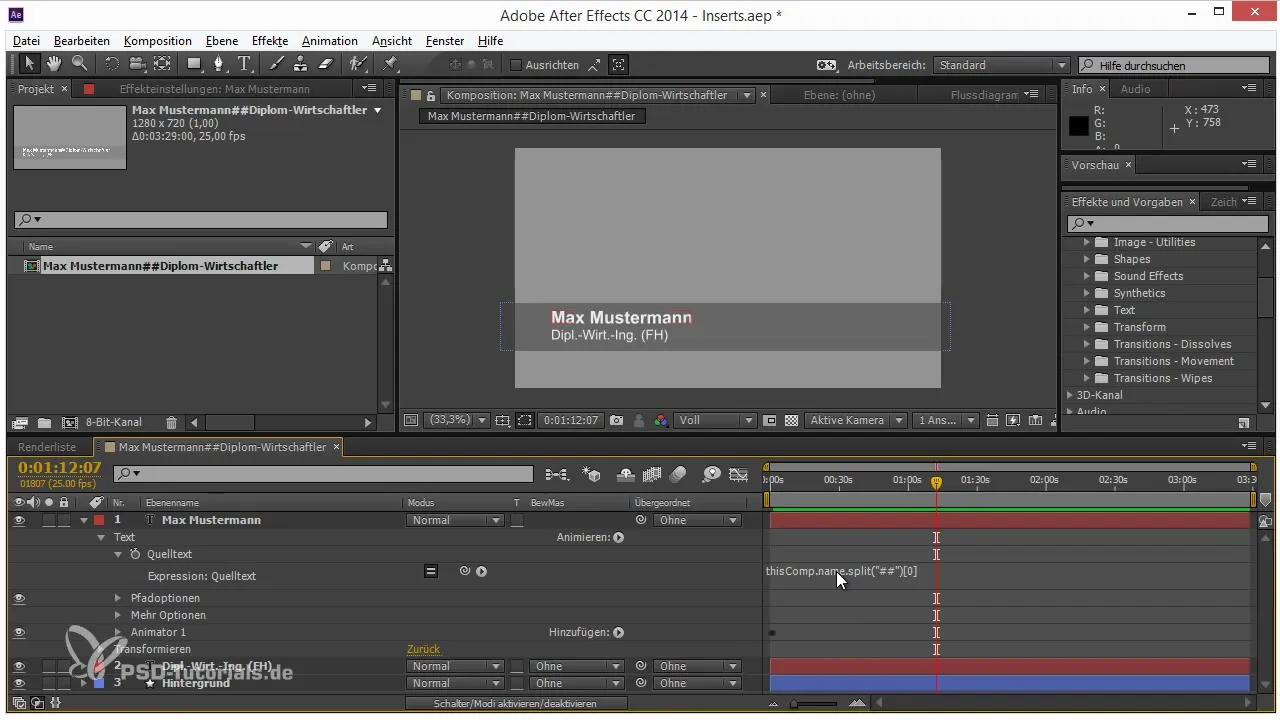
Step 7: Duplicating for Multiple Compositions
Now, when you duplicate the composition and rename it, the text in the text layer will automatically update. For example: If you switch from "Max Mustermann##Diplom-Wirtschaftler" to "Philip Schneider##Motion Designer", the text layer will change accordingly.
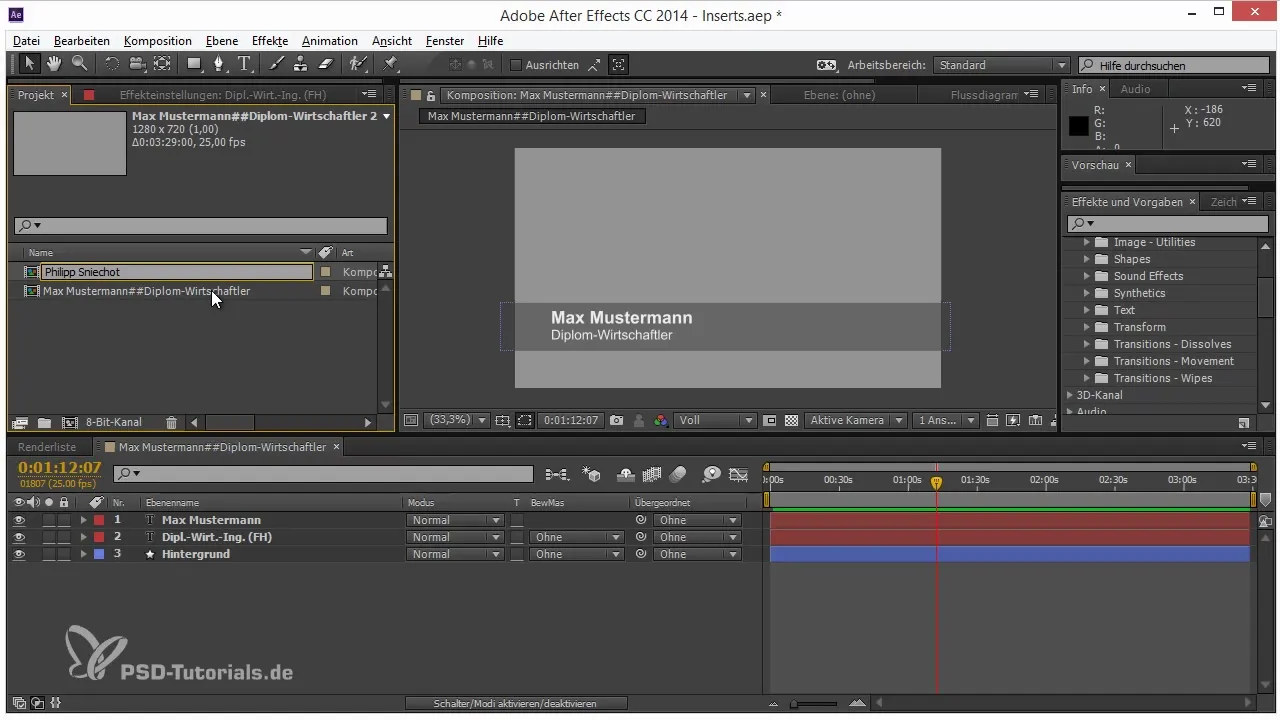
Step 8: Using for Other Projects
This trick is particularly useful for formats where content often repeats, be it for lower thirds, openers, or even for dates in your project. You can apply this technique in various contexts.
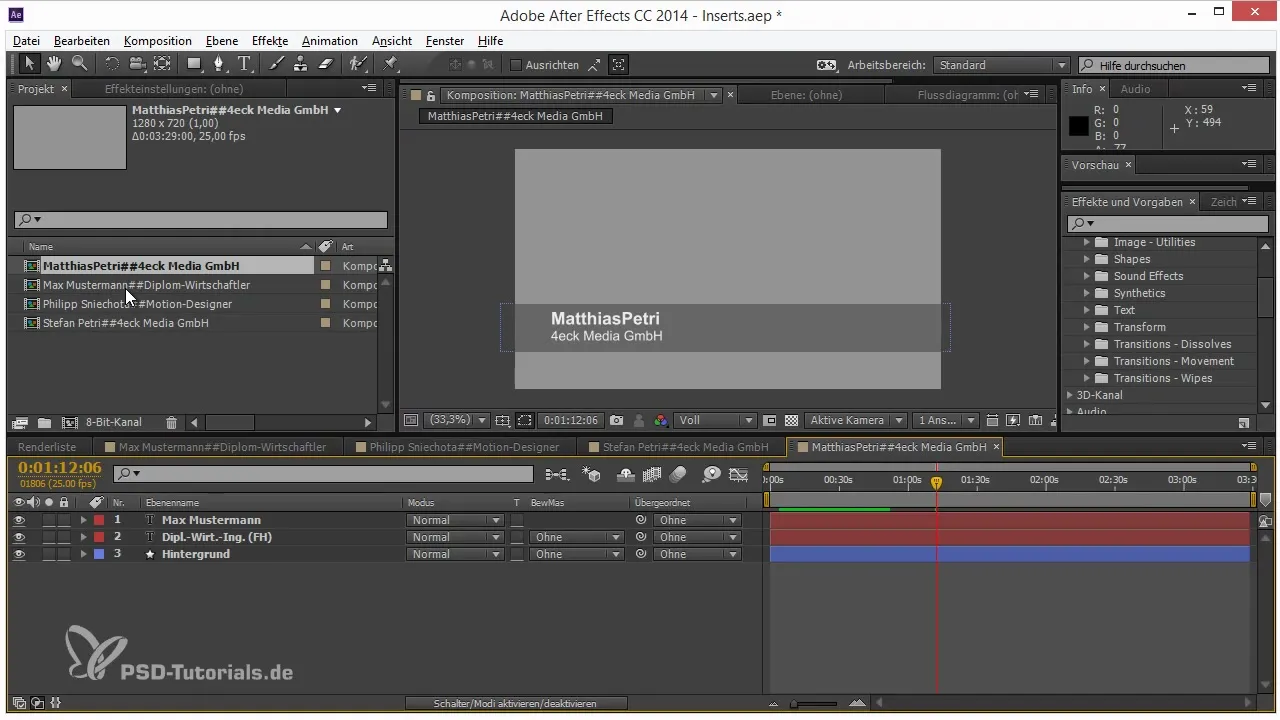
Summary - Tips and Tricks for Workflow in After Effects: Automation with Expressions
With the techniques presented, you can handle text more efficiently in After Effects and drastically simplify the creation process for recurring content. Use expressions to save time and optimize your workflow.
Frequently Asked Questions
How can I automatically update the text layer after I change the composition name?By using an expression that reads and splits the composition name.
Can I use other delimiters besides hashes?Yes, you can use any character as a delimiter, for example, commas or dollar signs.
How exactly does the function split() work?The function split() separates a string at a specified character and returns an array containing the parts.
How can I use this technique for other project types?You can use the same approach for different formats where text repeats, such as date representations or technical designations.


